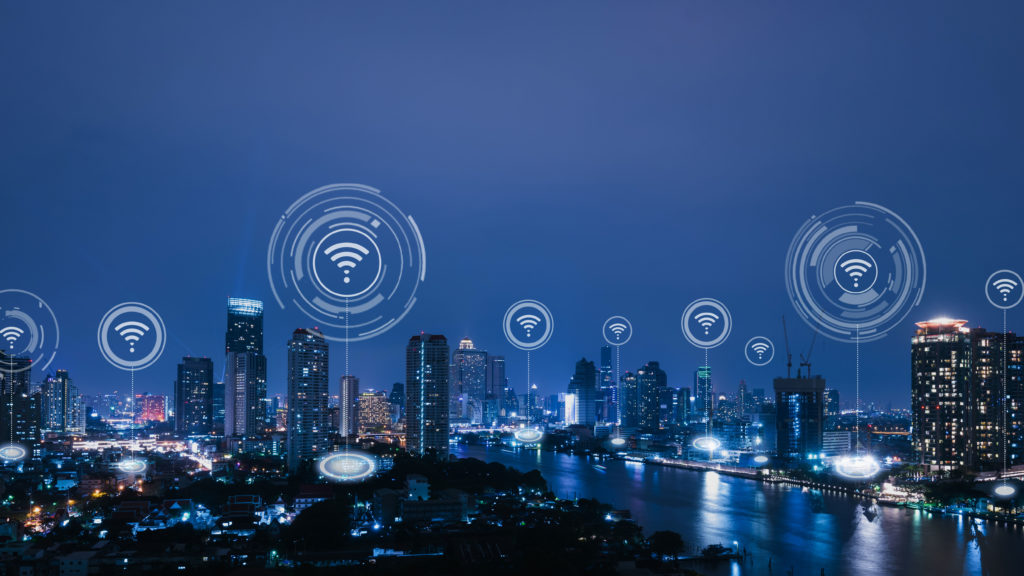Whilst it’s no secret that the pandemic has accelerated digital innovations, such as developments in 5G, AI, big data, and so on, the potential of such developments have only just begun to scratch the surface. Brian O’Rourke, CEO and Founder of CitySwift explores.
In smart cities, the rising adoption of connected and smart technologies, particularly as a result of the pandemic over the last year, has led researchers to predict that the market will grow from $410.8bn in 2020 to $820.7bn by 2025.
The role of transport in the formation of smart cities is largely rooted in tech disruption. The sector was already somewhat undergoing digitisation prior to 2020, with the use of technologies like contactless and online payments, though the past year has been a catalyst for giving the industry a long-overdue push in the right direction.
However, whilst smart cities are slowly but surely embracing the potential of AI and big data, we’ve still quite a way to go before it’s utilised to its full potential.
IoT has only led the transport sector so far
The Internet of Things (IoT) – that is, the use of sensors, software, and other technologies to better connect certain devices and systems over the internet – has been a major disruptor to the transport industry. It’s enabled improved communication, customer experience and data distribution, leading to cost savings for companies, and greater confidence amongst passengers.
However, IoT solutions only provide the foundations of enabling greater efficiency and sustainability in the sector. Of course, the need for better connectivity will always be there, and IoT innovations have been a major saving grace in terms of helping the travel networks to stay afloat and keep up with passenger demands.
However, as smart cities and smart networks become increasingly more nuanced and complex, this calls for the intervention of AI and big data to assist in the next phase of development.
Particularly in bus and coach transportation, which has essentially been static for the best part of a year, bouncing back and ensuring safer and greener journeys is going to be the challenge, and we need AI and big data to shape and facilitate this.
AI and big data can enable more informed decision-making around matching vehicle supply with passenger demand, and improve reliability. This leads to a better passenger experience and reduced likelihood of people switching from buses to private cars, which is good for congestion and the environment.
Big data facilitates unpredictability and gains back passenger confidence
The impact of COVID-19 means that travel behaviours and patterns have become less predictable, and in fact, it has caused passenger confidence in public transport to dramatically decrease.
With mask-wearing no longer being mandatory in England, except for commuters in London, trepidation around safety is still rife; 40% of Brits have expressed a desire to keep mask-wearing indefinitely. To address this situation and reassure the public that it’s safe to start using public transport we can look at the work bus companies are doing to restore confidence and trust.
They are utilising AI and big data to encourage passengers back onto buses safely by predicting capacity levels for every bus for any specific date and time. Information is continually updated based on actual bus loads and shared with passengers in an easy to understand ‘traffic light’ format.
Passengers can then use the information to plan their journeys. This in-turn improves customer experience and prevents unwanted occurrences like over-crowding or delays.
A more efficient, sustainable, and reliable travel network system
The next phase of digital transformation in the transport industry needs to center around the creation of congestion and emission-free cities, particularly in urban areas which face increasing challenges from high traffic levels and carbon emissions.
Smart cities utilising AI and big data will pave the way for such carbon-neutral futures and will form the crux of sustainable transport.
Alongside this, the sector needs to now be more active in assisting the developing of dynamic public transport, especially as authorities recognise that demand for travel is increasing, and that integrated, accessible, safe and reliable networks are vital for prosperity.
Bus companies are at the forefront of this transformation and many big players are already adopting such technologies to ensure passenger confidence and safety.
Ultimately, public transport systems have a vital role to play in contributing to a sustainable future for cities, but in order to do so, they must continue to develop and offer an attractive and responsive alternative to the private car.
